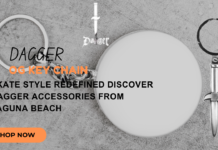Among the many treasures of Greece, the Heraklion Archaeological Museum stands as a beacon of history, culture, and civilization. Located in Heraklion, Crete, this museum is one of the most important museums in Europe, renowned for its unparalleled collection of Minoan artifacts and its role in preserving the cultural heritage of the Aegean civilization.
Whether you’re a passionate history lover, an art enthusiast, or a curious traveler exploring Crete, the Heraklion Archaeological Museum offers an extraordinary journey through time. This article provides a comprehensive guide to the museum’s history, exhibits, architecture, and significance. It also offers practical visitor tips, nearby attractions, and a look at property investment in Greece, especially in the culturally rich regions like Crete.
The Historical Importance of Heraklion Archaeological Museum
The Heraklion Archaeological Museum was founded in the early 20th century, with its origins dating back to the first archaeological excavations of the Minoan civilization. Crete, and particularly Knossos near Heraklion, was the heart of the Minoan culture—Europe’s earliest advanced civilization, flourishing from 2700 to 1450 BC.
As more Minoan ruins and artifacts were unearthed, the need for a dedicated facility to house these priceless treasures became apparent. In 1937, the museum opened in its modern form, becoming the official custodian of the Minoan legacy and the largest repository of ancient Cretan art and culture.
Today, the museum’s collection spans over 5,000 years, from Neolithic times through the Roman era, and is widely considered the most comprehensive Minoan collection in the world.
Museum Architecture and Layout
The Heraklion Archaeological Museum is a prime example of Modernist architecture with functionality and minimalism at its core. Designed by architect Patroklos Karantinos, the building harmoniously integrates natural lighting and spacious galleries to provide an immersive viewing experience.
The museum spans 27 galleries and over 8,000 square meters, with collections arranged both chronologically and thematically. Visitors follow a structured journey, beginning from prehistoric settlements and culminating in the art and culture of Classical, Hellenistic, and Roman Crete.
Highlights of the Collection
The Phaistos Disc
One of the most enigmatic artifacts in archaeology, the Phaistos Disc is a clay tablet inscribed with symbols arranged in a spiral. Dated to the 17th century BC, the disc remains undeciphered, sparking debate and fascination among scholars and visitors alike.
Snake Goddess Figurines
These figurines, dating back to 1600 BC, depict a goddess holding snakes, symbolizing fertility and domesticity. They exemplify the artistic sophistication of Minoan Crete and its religious beliefs.
The Bull-Leaping Fresco
This famous fresco captures a dramatic Minoan ritual in which athletes leapt over charging bulls. Its vibrant colors and dynamic composition make it one of the museum’s most iconic pieces.
The Prince of the Lilies
This fresco, reconstructed from fragments found at Knossos, portrays a youthful figure adorned with lilies and feathers, believed to be a priest or prince. It’s a striking example of Minoan art’s elegance and grace.
Linear A and B Tablets
The museum holds numerous clay tablets inscribed in Linear A and Linear B scripts, offering valuable insights into early writing systems and administrative practices in Bronze Age Crete.
Minoan Pottery and Jewelry
Elaborately decorated vases, amphorae, and intricate gold jewelry reflect Minoan craftsmanship and daily life. The Kamares Ware pottery, known for its vivid colors and curvilinear designs, is particularly notable.
Cultural and Historical Context
The museum doesn’t just showcase beautiful objects—it brings the Minoan civilization to life. Through artifacts, reconstructions, and educational panels, visitors gain insights into:
- Religion and ritual: Sacred symbols like bulls, double axes, and goddess worship.
- Architecture: Palaces, villas, and urban planning.
- Economy and trade: Evidence of trade with Egypt, Mesopotamia, and the Cyclades.
- Social structure: From kings and priests to artisans and farmers.
The Minoans were pioneers of art, commerce, and architecture, and their influence can be felt across the Aegean world.
Educational and Research Role
Beyond its exhibits, the Heraklion Archaeological Museum is a leading center for archaeological research, conservation, and public education. It hosts:
- Temporary exhibitions on newly discovered artifacts
- Lectures and symposiums
- Educational programs for children and students
- Collaborations with international museums and institutions
These initiatives ensure the museum remains a living institution, not just a static display.
Visiting the Museum: Practical Information
- Location: Xanthoudidou 1, Heraklion, Crete
- Opening Hours: Typically 8 AM to 8 PM in summer, with reduced hours in winter
- Tickets: Combined tickets with Knossos Palace are available
- Accessibility: Wheelchair accessible with multilingual guides available
To avoid crowds, visit early in the morning or late afternoon. The museum café and gift shop are also excellent places to unwind and purchase high-quality replicas and books.
Nearby Attractions in Heraklion
Palace of Knossos
Located just 5 km from the museum, this archaeological site is essential for understanding the Minoan civilization. The partially restored palace complex brings to life the grandeur of ancient Crete.
Koules Fortress
This Venetian fortress guards the Heraklion harbor and offers stunning views of the sea and city. It’s a great spot for photography and learning about Crete’s medieval history.
Historical Museum of Crete
A complement to the archaeological museum, this institution focuses on post-Classical Crete, including Byzantine, Venetian, and modern periods.
Lion Square and Morosini Fountain
At the heart of Heraklion’s Old Town, this lively square is surrounded by cafes and shops, making it a great stop after your museum visit.
Cultural Events and Seasonal Activities
Heraklion is a city alive with cultural events, especially in the summer months. From music festivals and art exhibitions to theatrical performances in ancient amphitheaters, the city offers a rich calendar of activities.
Many of these events feature Cretan music and dance, preserving the unique identity of the island. Museum visitors may also find special night tours and exhibitions hosted during cultural festivals.
The Role of the Museum in Modern Crete
The Heraklion Archaeological Museum is not only a guardian of ancient history but also a symbol of Cretan identity. It connects the modern people of Crete with their roots and serves as a reminder of the island’s contribution to European civilization.
As Crete grows in global significance as a cultural and tourist destination, the museum remains central to education, cultural diplomacy, and heritage tourism.
Property in Greece: Live Where History Breathes
Crete, particularly Heraklion, is becoming a hotspot for property investment in Greece. The region offers a combination of modern infrastructure, rich cultural life, and natural beauty, making it ideal for vacation homes, retirement, or rental properties.
Foreign nationals can legally purchase property in Greece, and the process is relatively straightforward. The Greek Golden Visa program allows non-EU investors who spend €250,000 or more on real estate to gain residency.
Whether it’s a traditional stone house in the Cretan hills, a seaside villa, or an urban apartment near the museum, property in Greece offers not only lifestyle benefits but also excellent long-term value. Real estate near cultural hubs like the Heraklion Archaeological Museum is especially desirable for both locals and international buyers.
Sustainability and Preservation
The museum also champions sustainability and preservation. Conservation labs work tirelessly to protect fragile artifacts, while digital archives ensure data remains accessible for future generations.
Moreover, partnerships with schools and community groups promote responsible tourism and the importance of heritage conservation. Visitors are encouraged to support local businesses and minimize their environmental footprint during their stay.
Future Expansions and Innovations
The Heraklion Archaeological Museum continues to evolve. Upcoming plans include:
- Interactive exhibits using augmented reality (AR)
- Expanded digital catalogues
- Renewed collaborations with global institutions like the British Museum and Louvre
These initiatives aim to make history more engaging and accessible, especially to younger audiences and international visitors.
Testimonials and Visitor Impressions
Travelers from all over the world have praised the museum for its organization, informative displays, and aesthetic appeal. Here are a few sentiments commonly shared:
- “It’s like walking through a time machine into the heart of Minoan civilization.”
- “The collection rivals any in Europe—absolutely a must-visit.”
- “Impressive layout and incredibly detailed artifacts.”
With a 4.7-star rating on Google and glowing reviews on platforms like TripAdvisor, the Heraklion Archaeological Museum consistently ranks among Greece’s top attractions.
Conclusion
The Heraklion Archaeological Museum is far more than a collection of ancient objects—it is a living legacy of European civilization’s dawn, a tribute to Crete’s unique role in shaping the world’s cultural tapestry.
Whether you are exploring Crete for the first time or returning for a deeper experience, the museum offers insights, inspiration, and awe. Its thoughtful design, educational mission, and treasure trove of artifacts make it a cornerstone of historical tourism in Greece.
From viewing the mysterious Phaistos Disc to walking among the gods and goddesses of Minoan art, every step inside the Heraklion Archaeological Museum connects the present with the distant past. Combined with the vibrant life and promising real estate market of Crete, this destination is as rewarding to visit as it is to live in.
































